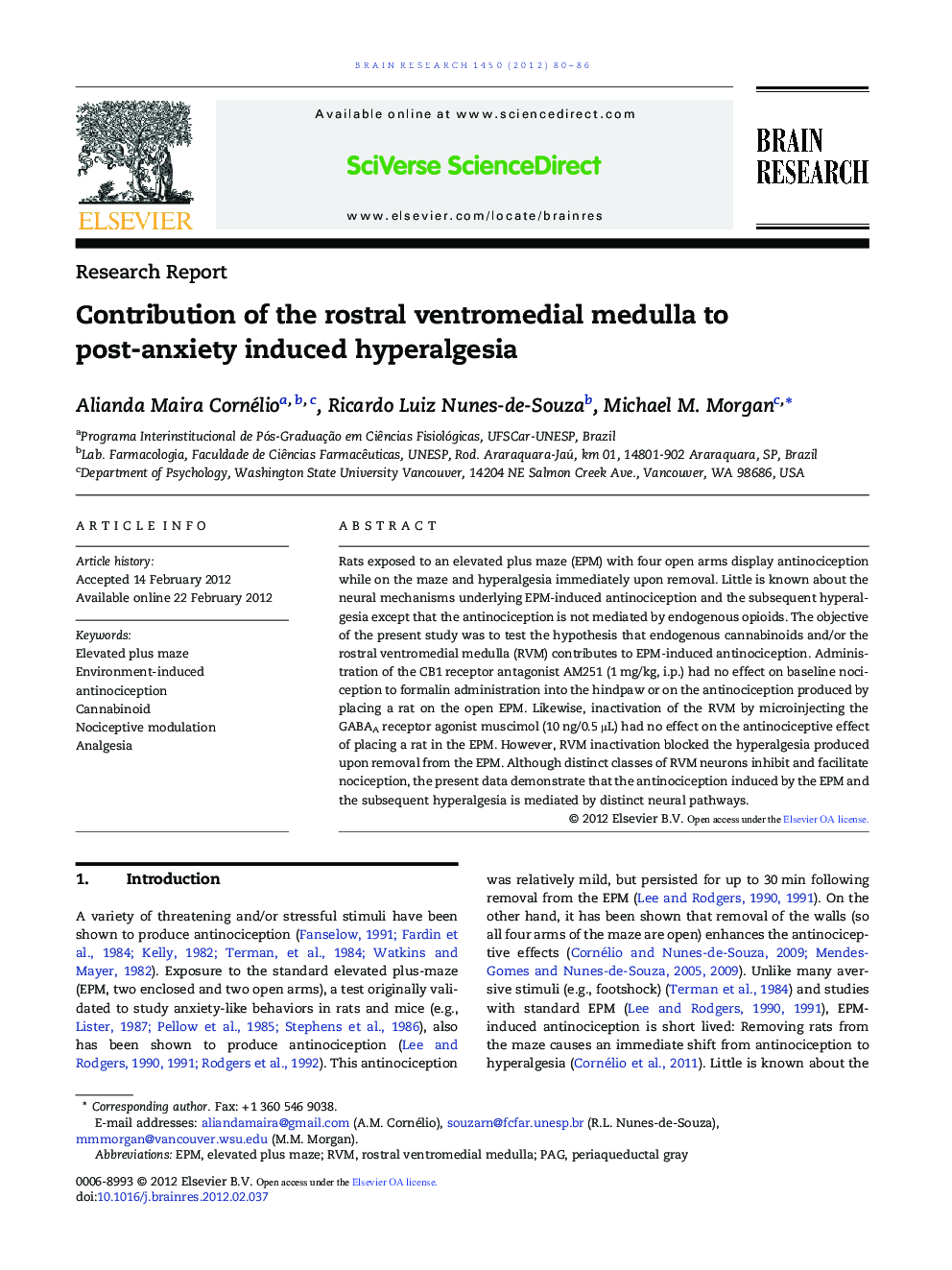| Article ID | Journal | Published Year | Pages | File Type |
|---|---|---|---|---|
| 6264413 | Brain Research | 2012 | 7 Pages |
Rats exposed to an elevated plus maze (EPM) with four open arms display antinociception while on the maze and hyperalgesia immediately upon removal. Little is known about the neural mechanisms underlying EPM-induced antinociception and the subsequent hyperalgesia except that the antinociception is not mediated by endogenous opioids. The objective of the present study was to test the hypothesis that endogenous cannabinoids and/or the rostral ventromedial medulla (RVM) contributes to EPM-induced antinociception. Administration of the CB1 receptor antagonist AM251 (1 mg/kg, i.p.) had no effect on baseline nociception to formalin administration into the hindpaw or on the antinociception produced by placing a rat on the open EPM. Likewise, inactivation of the RVM by microinjecting the GABAA receptor agonist muscimol (10 ng/0.5 μL) had no effect on the antinociceptive effect of placing a rat in the EPM. However, RVM inactivation blocked the hyperalgesia produced upon removal from the EPM. Although distinct classes of RVM neurons inhibit and facilitate nociception, the present data demonstrate that the antinociception induced by the EPM and the subsequent hyperalgesia is mediated by distinct neural pathways.
⺠Exposure of a rat to the open elevated plus maze (EPM) produces antinociception. ⺠Neither CB1 receptors nor the RVM contributes to this antinociception. ⺠Removing rats from the open EPM produces hyperalgesia. ⺠Inactivation of the RVM reverses this hyperalgesia.
